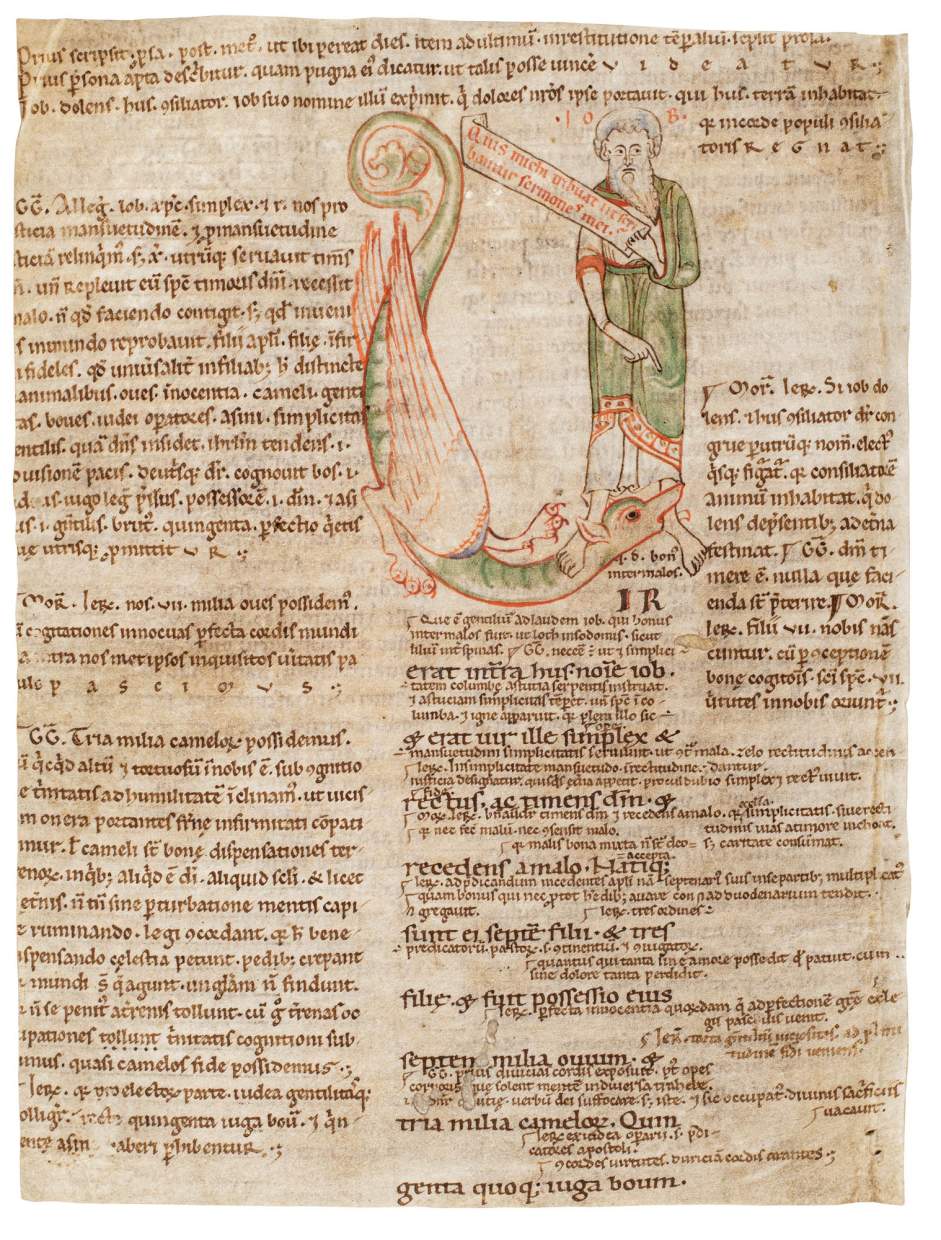

Historiated Initial 'V' formed of Job and the Dragon,
Leaf from a glossed Book of Job on vellum,
Southern Germany, c. 1130.

This beautifully rendered miniature is a striking example of German Romanesque manuscript painting and a rare witness to one of the most important works of the 12th century: the Glossa ordinaria, a collection of commentaries on the Bible. The author, Anselm of Laon, was a French theologian, Dean, and Chancellor of the Cathedral at Laon, and one of the principal pioneers of biblical hermeneutics.
A large decorative initial V in contrasting green, red, and grey washes introduces the Book of Job. The historiated initial is formed by the figure of Job suppressing a stylised Leviathan or dragon under his right foot, which in turn is biting his left ankle. Job holds an unfurling scroll containing Job 19:23: “Who will grant me that my words may be written?” (Quis michi tribuat ut scribantur sermones mei). With few, well-placed brush strokes, the artist is able to create a stern and solemn expression on Job’s face. His hand holds the scroll, tightly curled, while his slender right hand points downwards at the dragon’s head.
The text of the interlinear and marginal glosses on the Scriptures are rendered in a finely executed Romanesque miniscule. The script is written in highly pigmented dark brown ink, with a few lines of scripture in black, formed by crisp and assured strokes. The layout of the text is unusual and intriguing, starting with one column and branching into three distinct sections with the glosses added meticulously to the middle column containing the scripture text. This particular layout can also be found in the Rebdorf Psalter featuring glosses from Anselm of Laon, as well as in other glossed Bible manuscripts from Rebdorf, now in the Vatican Library.
This early leaf is an extraordinary example of monastic manuscript production; an important witness demonstrating how monks copied complex texts and layouts, and then enriched the pages with fine decorations.



